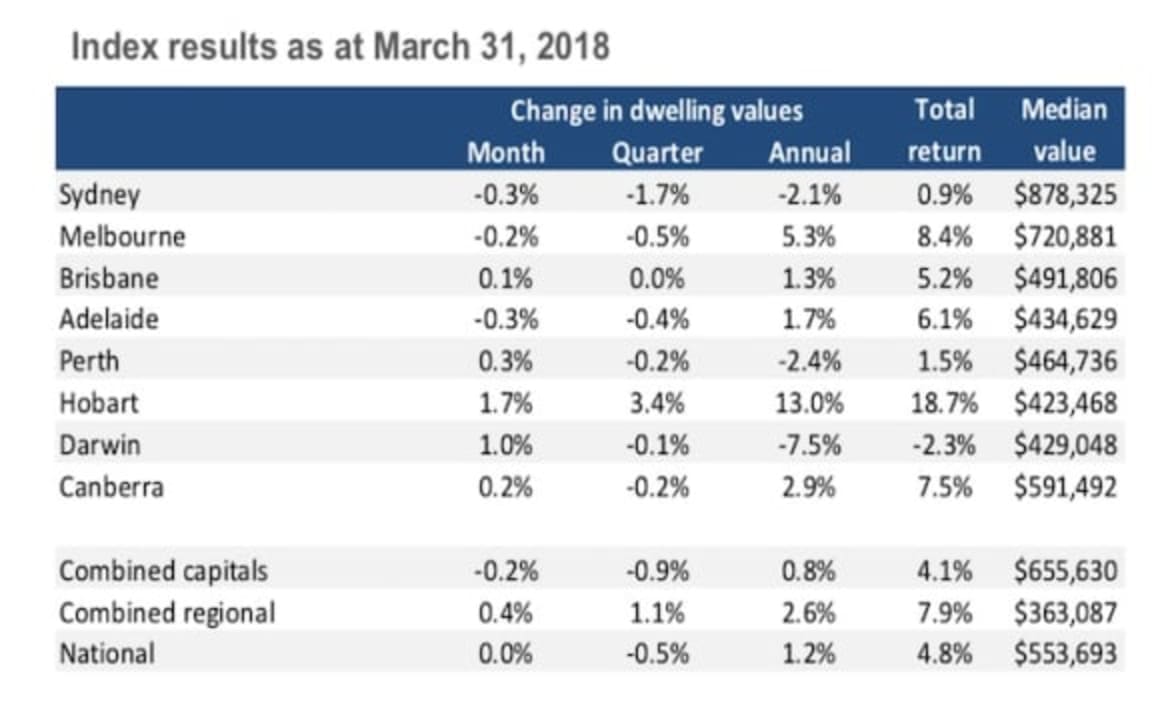Six of eight capital cities record falling values in first quarter: CoreLogic

National dwelling values were unchanged in March, with the steady month on month reading seeing a fall of 0.2 percent in capital city dwelling values, according to the CoreLogic hedonic home value index.
The combined regional markets saw values rise by 0.4%.
Trends across the March quarter showed that capital city home values were 0.9% lower over the March quarter, while values across the regional markets have tracked 1.1% higher.
Six of the eight capital cities have recorded a fall in values over the first quarter of 2018, ranging from a 1.8% drop in Sydney values to a 0.1% fall in Darwin.
Hobart recorded 13 percent price growth, the strongest of any capital.
Click here to enlarge.

Regional markets are now consistently outperforming the combined capitals.
CoreLogic head of research Tim Lawless said the trend began in October.
“The stronger combined regional markets performance continues a trend that began to emerge in October last year where regional housing markets showed an overall improvement in the pace of capital gains while the combined capitals trend softened.”
“The broad-based falls highlight that the softening trend in the Australian housing market is largely due to weaker conditions in Sydney, however, most other capitals are also recording subtle falls.
"Dwelling values were steady over the quarter in Brisbane and have continued their strong run of growth across Hobart, up +3.4%.”
Click here to enlarge.

The unit sector across Sydney and Melbourne has shown stronger conditions relative to detached housing.
“The March home value indices results also confirm that the unit sector is now consistently outperforming the detached housing market - a trend which has been evident since mid-2017," Lawless said.
"The stronger performance is subtle at the combined capitals level: capital city house values were down 1% over the March quarter while unit values were down a more moderate 0.7%.”
More significant differences between houses and units can be seen in Sydney and Melbourne where housing affordability pressures are more evident relative to other cities.
Sydney unit values are up 1.9% over the past twelve months, while house values are down 3.8%.
Similarly in Melbourne, unit values are 6.6% higher over the past twelve months while house values are up just 4.9%.
“The stronger performance from the unit sector may suggest that buyer demand is becoming more concentrated in the medium to high density sector where entry prices are lower and commuting times are often more convenient when compared with the detached housing markets around the outer fringes of the city," Lawless suggested.